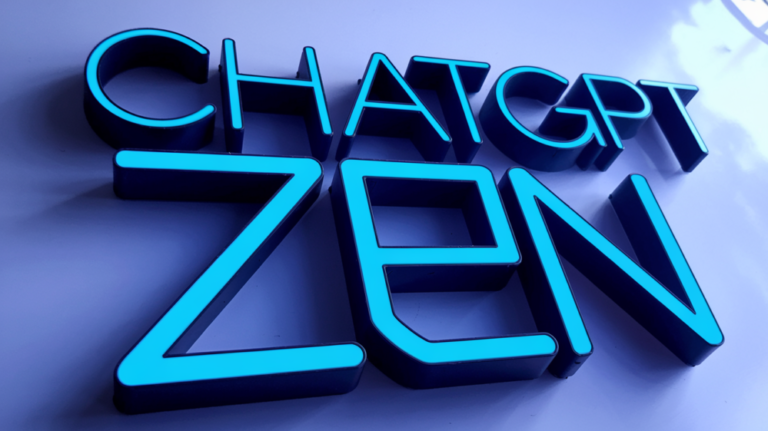Learn how to use TensorFlow 2.0 in this full tutorial course for beginners. This course is designed for Python programmers looking to enhance their knowledge and skills in machine learning and artificial intelligence.
Throughout the 8 modules in this course you will learn about fundamental concepts and methods in ML & AI like core learning algorithms, deep learning with neural networks, computer vision with convolutional neural networks, natural language processing with recurrent neural networks, and reinforcement learning.
Each of these modules include in-depth explanations and a variety of different coding examples. After completing this course you will have a thorough knowledge of the core techniques in machine learning and AI and have the skills necessary to apply these techniques to your own data-sets and unique problems.
⭐️ Google Colaboratory Notebooks ⭐️
📕 Module 2: Introduction to TensorFlow –
📗 Module 3: Core Learning Algorithms –
📘 Module 4: Neural Networks with TensorFlow –
📙 Module 5: Deep Computer Vision –
📔 Module 6: Natural Language Processing with RNNs –
📒 Module 7: Reinforcement Learning –
⭐️ Course Contents ⭐️
⌨️ (00:03:25) Module 1: Machine Learning Fundamentals
⌨️ (00:30:08) Module 2: Introduction to TensorFlow
⌨️ (01:00:00) Module 3: Core Learning Algorithms
⌨️ (02:45:39) Module 4: Neural Networks with TensorFlow
⌨️ (03:43:10) Module 5: Deep Computer Vision – Convolutional Neural Networks
⌨️ (04:40:44) Module 6: Natural Language Processing with RNNs
⌨️ (06:08:00) Module 7: Reinforcement Learning with Q-Learning
⌨️ (06:48:24) Module 8: Conclusion and Next Steps
⭐️ About the Author ⭐️
The author of this course is Tim Ruscica, otherwise known as “Tech With Tim” from his educational programming YouTube channel. Tim has a passion for teaching and loves to teach about the world of machine learning and artificial intelligence. Learn more about Tim from the links below:
🔗 YouTube:
🔗 LinkedIn:
—
Learn to code for free and get a developer job:
Read hundreds of articles on programming:











Let me know what you guys think of the course?! Took a lot of preparation and work to get this out for you guys. Hope you all enjoy and get a solid foundation in the world of machine learning 🙂
@Kemmoun Ramzy ok
@عبد الرحمن القادري Ok
Ho gosh this is hard for me to explain because I literally love the way you are explaining everything
I always find tutorials that explains stuff I already know and over repeating, or tutorials that are to advanced and I get lost… I just realized now that you ask but I didn’t felt neither overwhelmed by the complexity or the oversimplification Tim you are mastering your topic and so far I am very impressed by your skill I am at 46:54 (A tensor of degree 0 is a scalar, which is a single numerical value. Therefore, the shape of a tensor of degree 0 is an empty tuple, denoted by ‘()’.) I just found out this course today and I am really passionated about your style of teaching and the way you explain everything is so great I don’t know how you got all that knowledge and expertise but I guess you are passionate about it also with 3 years experience (the course was 2020 we are 2023) you probably are even better at it… I feel privileged to have you as a teacher…
Hello Tim of 2020 I just want to remind you that «Talking a lot» is something expected in a 7hrs video and it would be weird if you were not talking much… just so you know 1:01:55
Amazing tutorial with really good explanations and drawings to understand basics. It is exactly what I was looking for with my level in Python and AI. I will definitely subscribe for more turorials 🙂
*My takeaways:*
1. TensorFlow has two main components: graph and session 33:05
2. We can rebuild a model and change its original parameters 5:56:31
3. Reinforcement learning with Q-Learning 6:08:00
Run time 3:37:00 – I think we have to compile the model every time before we do a fit. Otherwise it just memorize the previous epochs and use it for next iterations. In this case I believe that 92% accuracy of 1 epochs is the same as the addition of previous epochs i.e 10+8+1 = 19 epochs
‘I’m sorry I’m talking a lot but…’
Bro, it’s a 7 hour TensorFlow tutorial, I didn’t expect anything less! Awesome tutorial, thanks man
can u tell me how to feed a single row of customised titanic. Csv to check for out prediction using logistic regression. The video shows how to fetch the percentage of probability. So if I need to feed an input of my own how do I do it. Do u know??
@Aparup Ganguly 😅😅😅
@Aparup Ganguly what?🤣
@Erwin Rommel You simple feed in you new row as a data frame and fit it again to the estimator instead of the the train dataset that you used to build the model. Basically its fitting your test dataset to the final model.
@Aparup Ganguly Very peculiar timeframe iykwim 🙂
You’re an ace Tim! Thanks for taking the time to share what you’ve learned with the rest of us!
Timestamps for all the different core learning algorithms,
Linear Regression (01:00:00)
Classification (01:54:00)
K-Means Clustering (02:17:07)
Hidden Markov Models (02:24:56)
Hey just to confirm, are you sure the 1:00:00 is the linear regression and not linear classification. i am not able to get this. we are classifying whether it will be survived or not. based on the input data. can some one please help with this
@Prasad Dalavi I am also in doubt about that
@Prasad Dalavi Its classification, he uses the Classification estimator. No idea why he called it regression. Maybe because his final output is the probability and not the class (0 or 1)
@Manav Patnaik Even if your output is the probability of getting 1 0r 2 it will still consider as a classification estimator. Cuz in reality classification Just predicts the probability of getting 1 0r 0 (with the help of sigmoid function).
@Prasad Dalavi super late comment, but for future people I believe this is a logistic regression, which is a type of classification ML model
Just finished the tutorial, it’s really well made and an amazing intro to ML concepts. I’m really excited to explore this further thankyou so much Tim.
For people wanting to understand the basic idea behind Neural Networks, 3BlueOneBrown’s video is a nice addition to your introduction! It helped me understand the topics and coding Tim discussed a lot better
Also Stanford has their full CS229 course online as well – along with lecture notes. 🙂
I typically hate narrative talk alongside & prefer scripted tutorials, but you’ve spoken very clearly & concisely while extemporaneously. Very well done! 🙏🏼
It is a really amazing video, I learned a lot! Thank You very much!
I would like to ask, which might be interesting for others as well:
How is it possible to get out the parameters for the equation, after training in the case of the Titanic dataset (see from 1:13:00)?
I assumed, that the linear regression model looks like this:
(I hope the “LinearClassifier” using the same.)
y = b0 + b1*x1 + b2*x2 + … + b9*x9 + e
y: dependert variable (‘survived’)
x1 … x9: independent variables
b0: an estimate of the regression intercept
b1 … b9: an estimate of the regression slope = coefficients
e: error term
-> How can I get to know the b0 … b9? So I can use it in a simple program 🙂
48:00 rank
50:00 shape
52:00 change in shape
55:10 types of tensors
56:30 evaluating Tensors
57:25 sources
57:40 practice
1:00:00 tensorflow core learning algorithms
1:02:40 linear regression
1:13:00 setup and import
1:15:40 data
Very amazing! Mainly i was looking for special explanations about reinforcement learning using a conventional NN, but when i found this this seemed to be an interesting start to Machine Learning. Thank you very much for this huge amount of work and research done and the possibility to get deeper in the matter with NNs for free! A big like!
Thanks for this amazing course ! It’s super interesting, clear explanations, it’s a perfect starting point to machine learning with Tensorflow !
I really, really enjoyed this tutorial . It takes the time to explain soo many aspects and has a great build up. Well done!
I think this course gives a chance to anyone who wants to learn machine learning in a fast and free way.
And save a bunch of time looking at papers and library literature.
This course is gradual.
There is a clear understanding of everything from linear regression to reinforcement learning, and even the example programs are fully described and annotated. The people who made and designed this course are very thoughtful and selfless sharing and deserve huge applause.
Thank you very much.
Thanks, man, I was having difficulties learning core concepts of ML for a long time but this video cleared all my queries and now I understand everything which you’ve explained. Thanks again for making this video. It helped a lot
Despite being lost in the RNN part haha, this tutorial was great! I really appreciate your hard work and you’ve done great in simplifying explanations. Well done! It’s programmers like yourself that make it possible for anybody to learn programming and that is a great thing. I hope to see more courses from you in the future!
Tim, I know you’ve heard this before, but this was a very well done course on Tensorflow basics and Machine Learning. This is my first online course I’ve taken and glad it was yours! Thanks for the time you put into this course which will help countless programmers and adventurers interested in this fascinating field.
Thanks Tim, this is exactly what I needed to take my python skills to the next level! 🙏